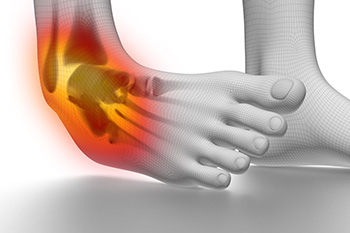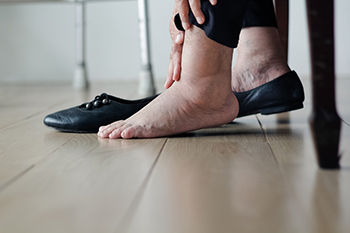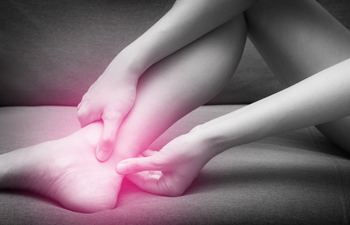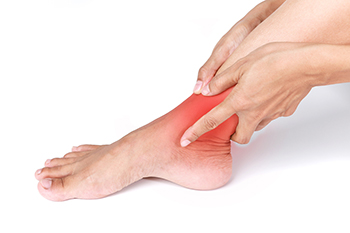A sprained ankle is a common injury that can happen to anyone. Whether you incur it while playing a high-impact sport or from simply stepping off of a curb and twisting your ankle, it’s important to know and recognize the symptoms of a sprain and get the appropriate treatment.
Ankle sprains occur when a sudden injury causes one or more of the ligaments that support the ankle to overstretch or tear. The symptoms that you may face depend on the severity of the injury. A mild, grade 1 sprain usually involves minimal pain, swelling, tenderness, and bruising, with no difficulty walking. A moderate, grade 2 sprain may be significantly more painful, with visible swelling and bruising, ankle instability, and a limited range of motion in the ankle. Walking or bearing weight on the affected ankle can be difficult. A severe, grade 3 sprain is characterized by intense pain, swelling, bruising, ankle instability, and a severely limited range of motion. Walking with a grade 3 sprain is often impossible.
A chiropodist can diagnose an ankle sprain by asking for your medical history and carefully examining the affected ankle. They may order an X-ray to rule out a fracture. Treatment for the sprain depends on its severity. Milder ankle sprains can often be treated with conservative methods such as resting, icing, elevating, and compressing the ankle. More severe sprains may require wearing a brace or other orthotic device to take pressure off of the injured ankle. Over-the-counter medications are typically sufficient for managing pain. In very rare cases, surgery may be needed to repair a ligament that is not healing properly.
A sprained ankle needs to heal fully and properly in order to avoid reinjury and other complications. If you have sprained your ankle, please seek the care of a chiropodist.





